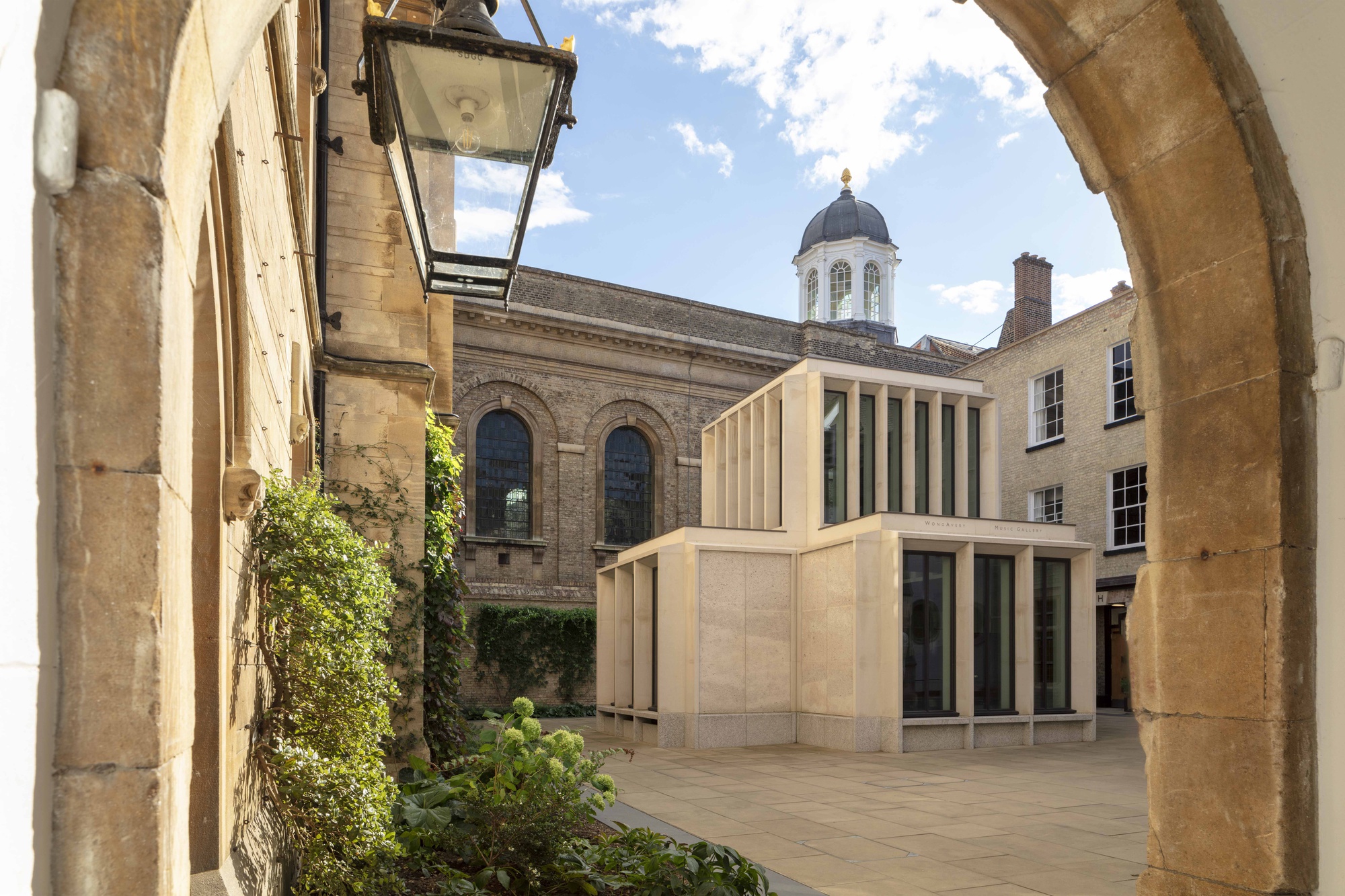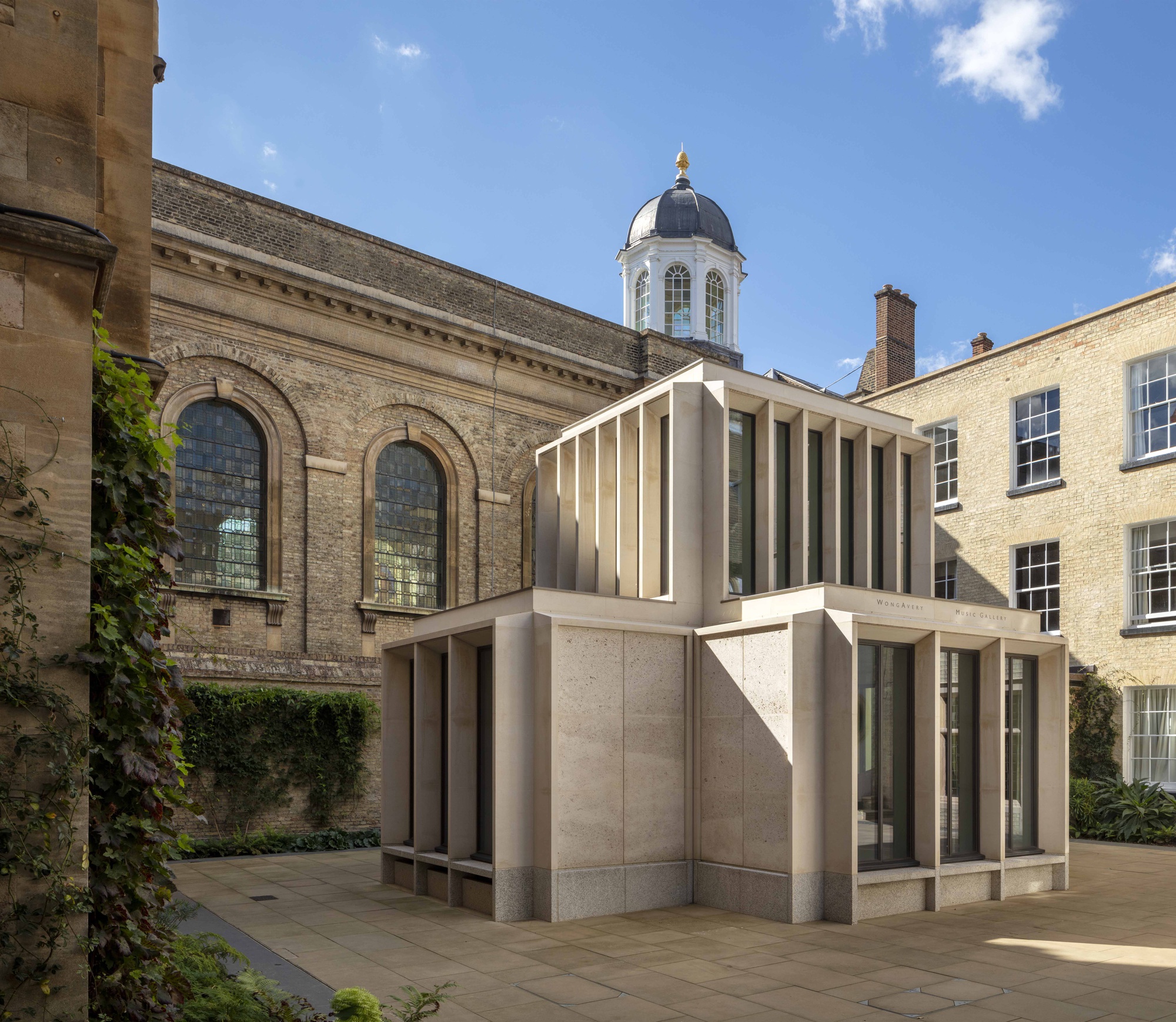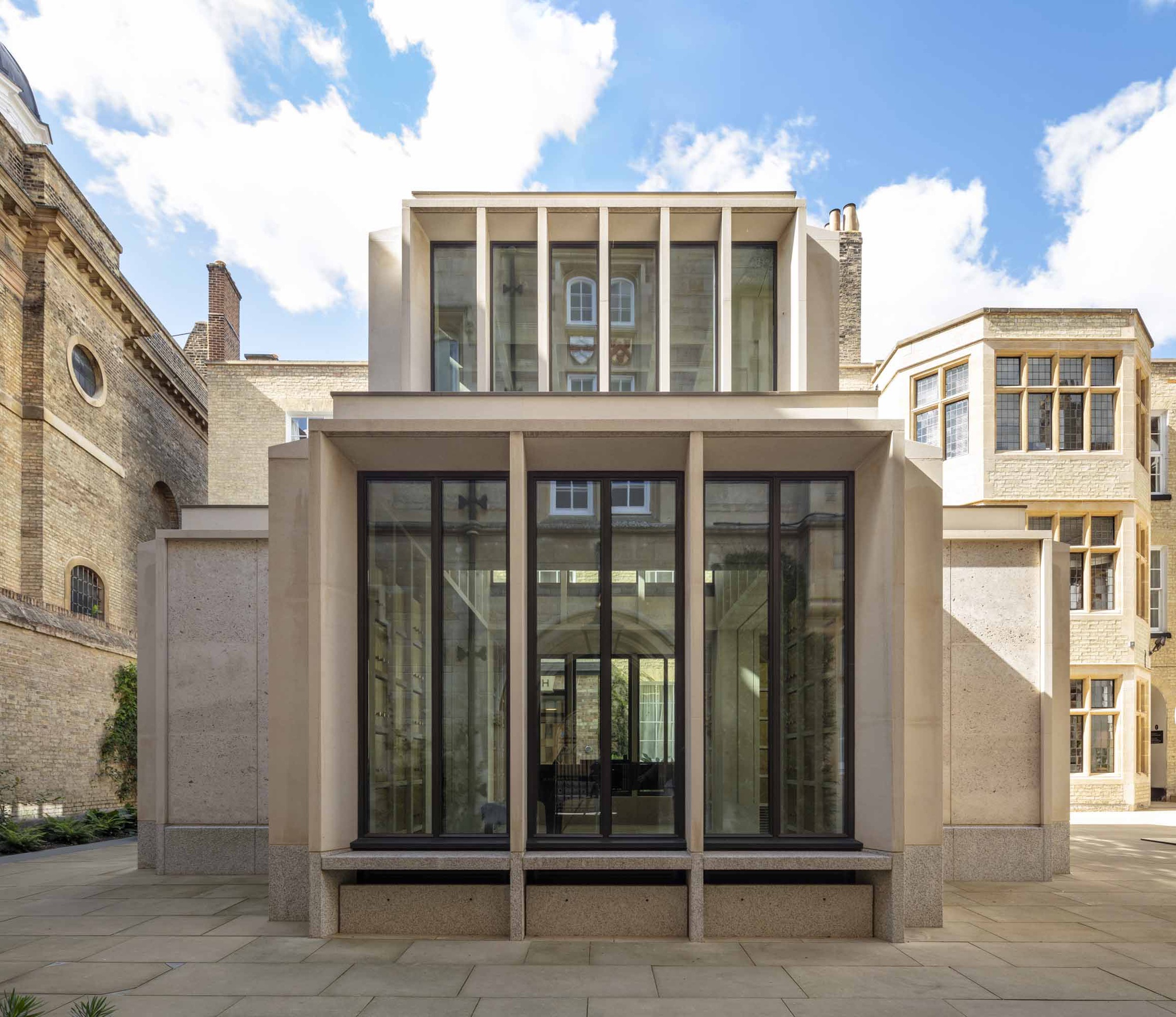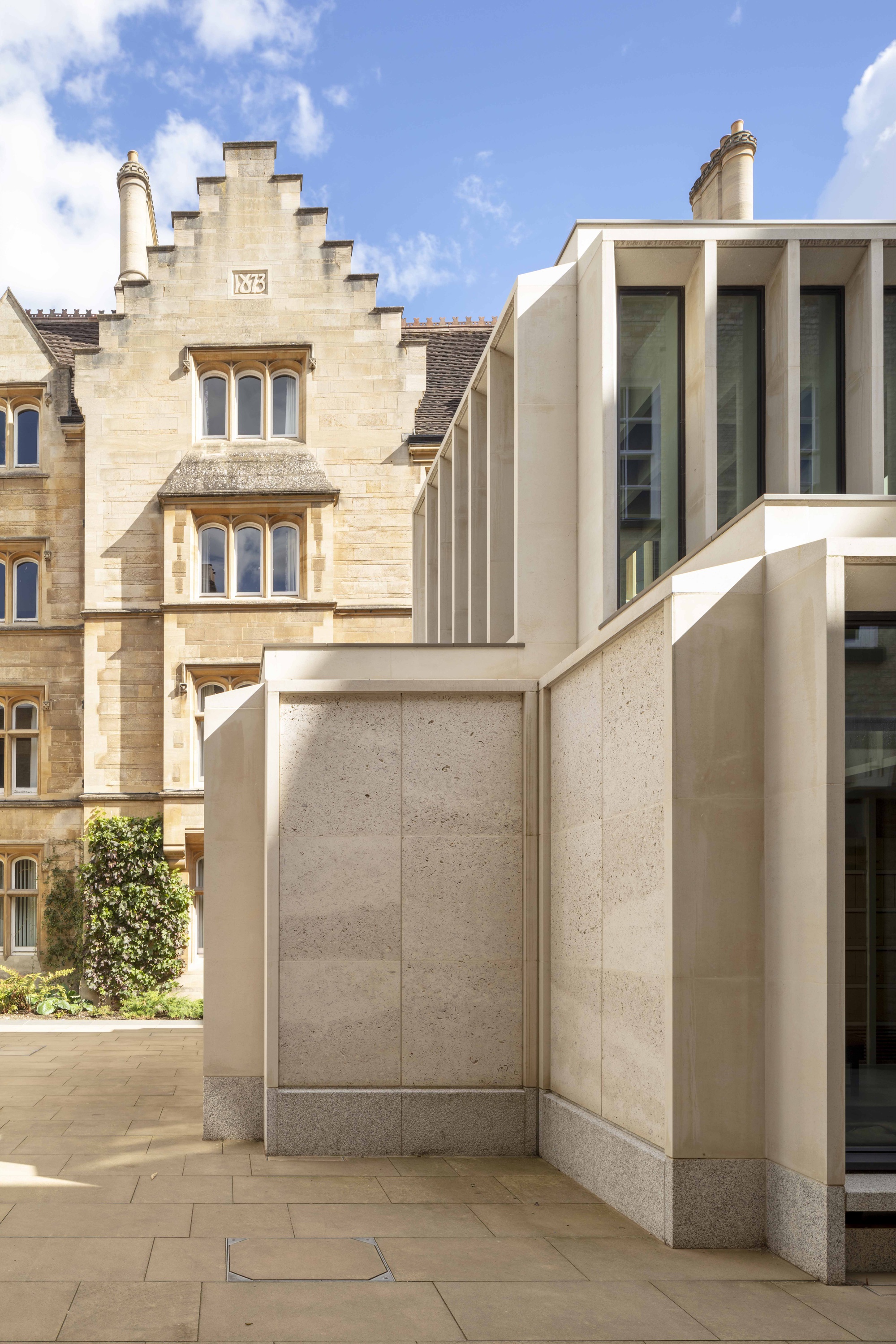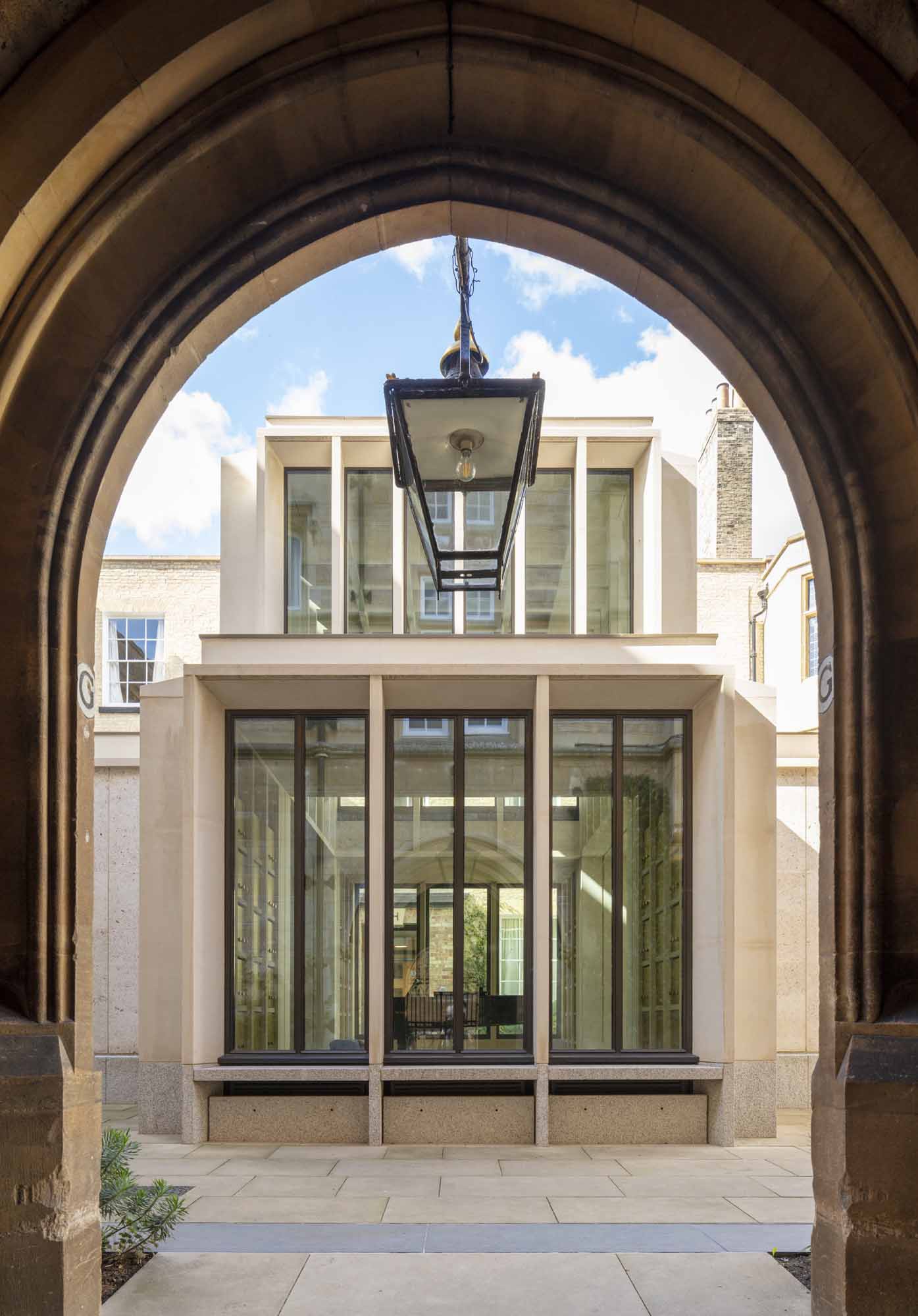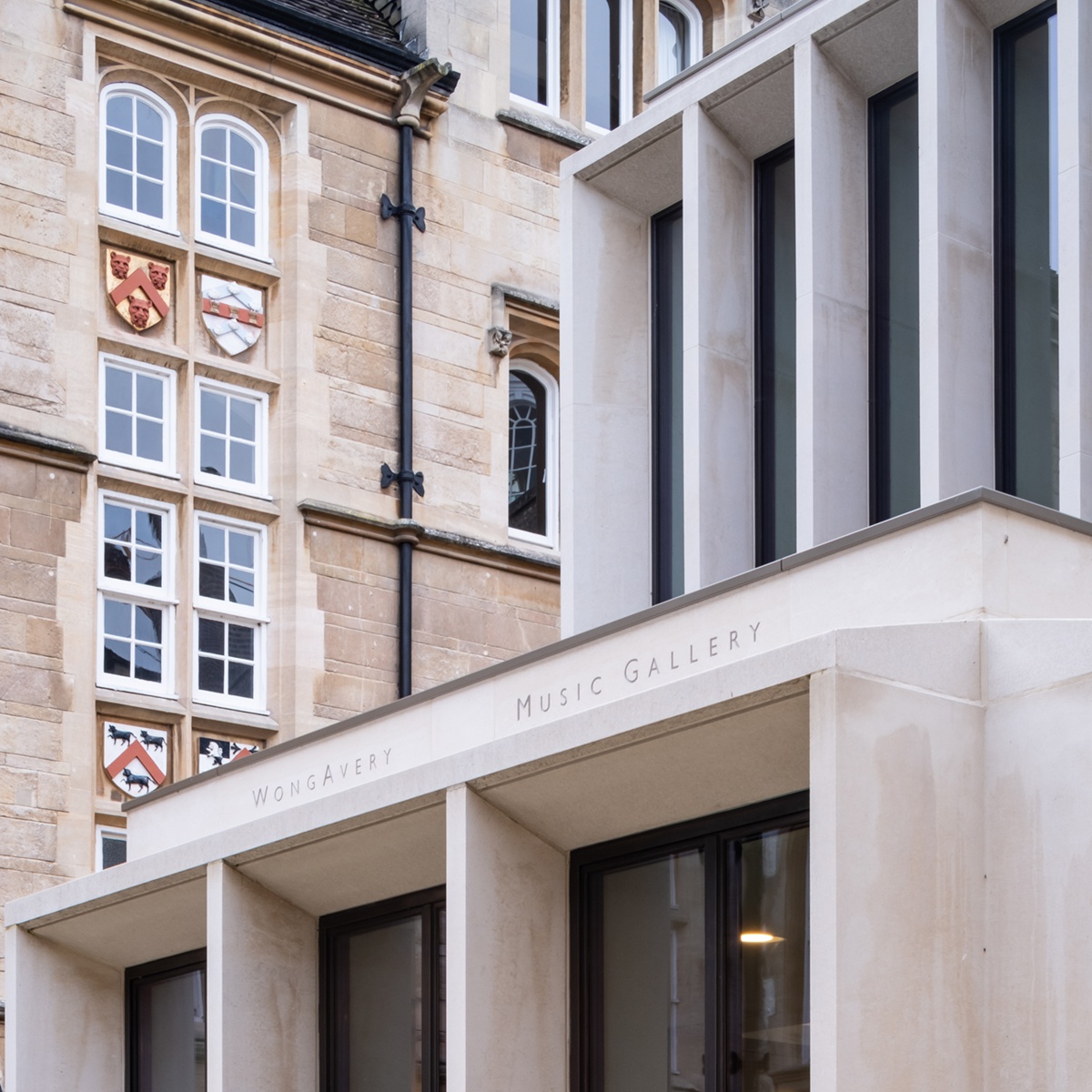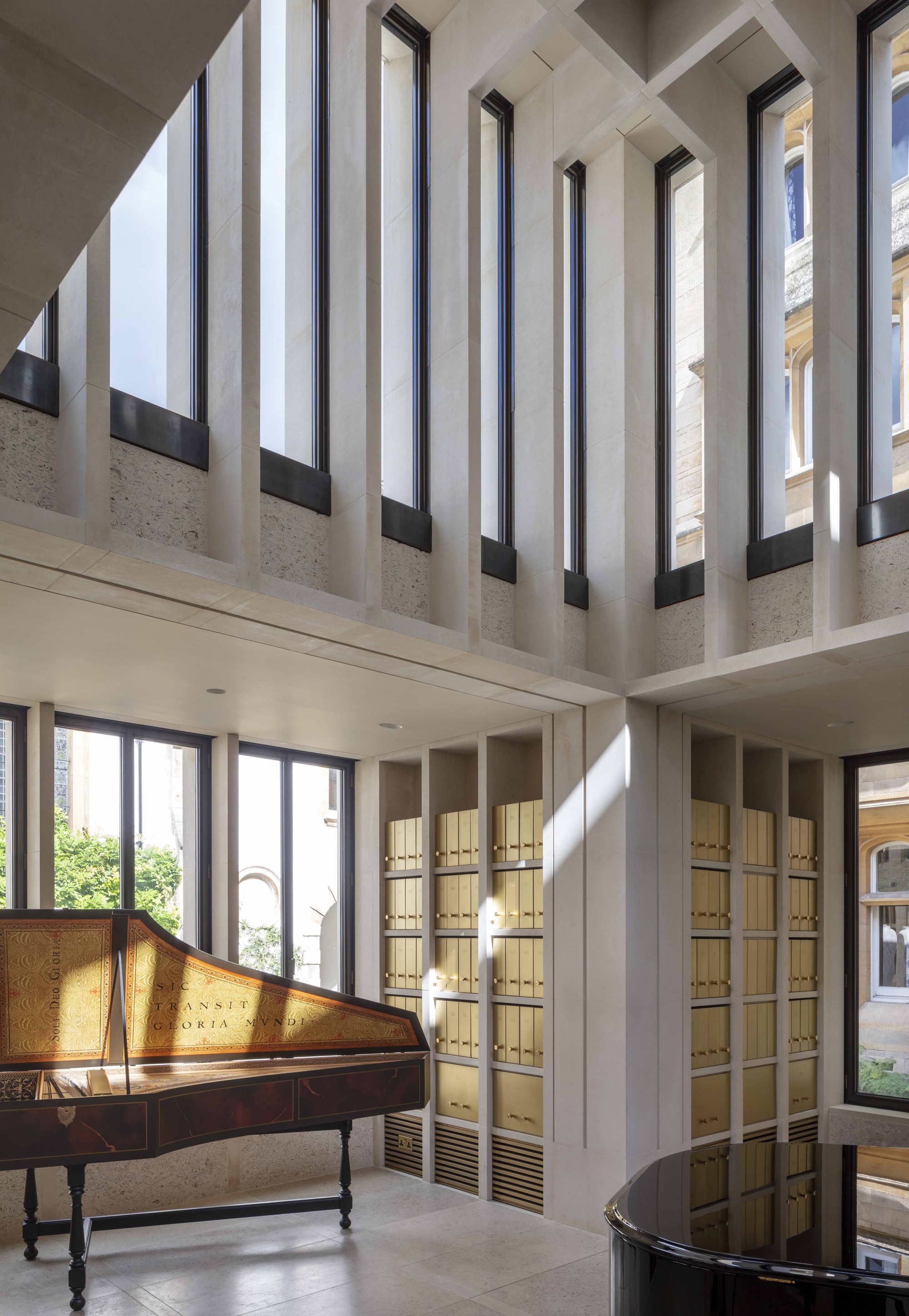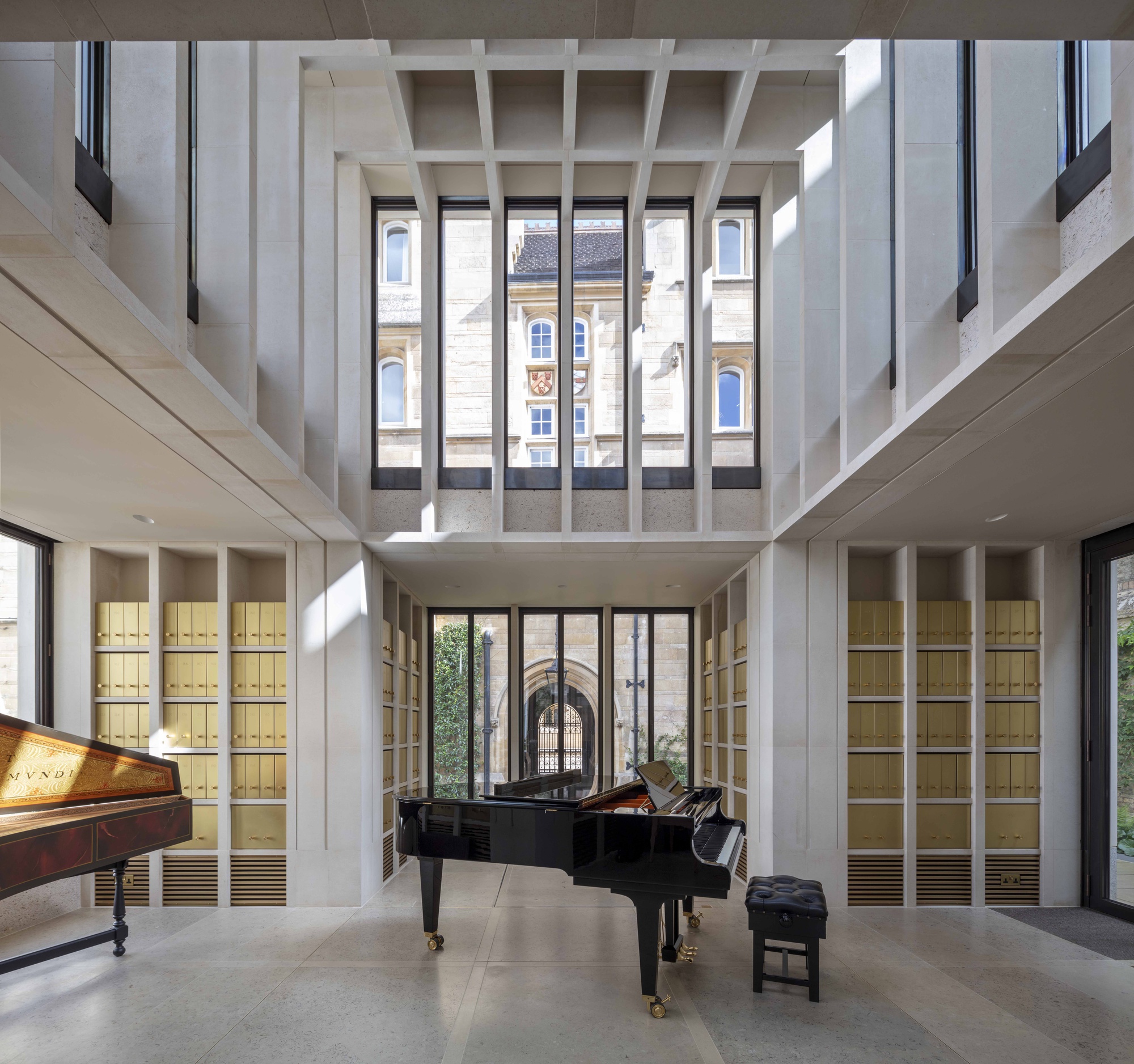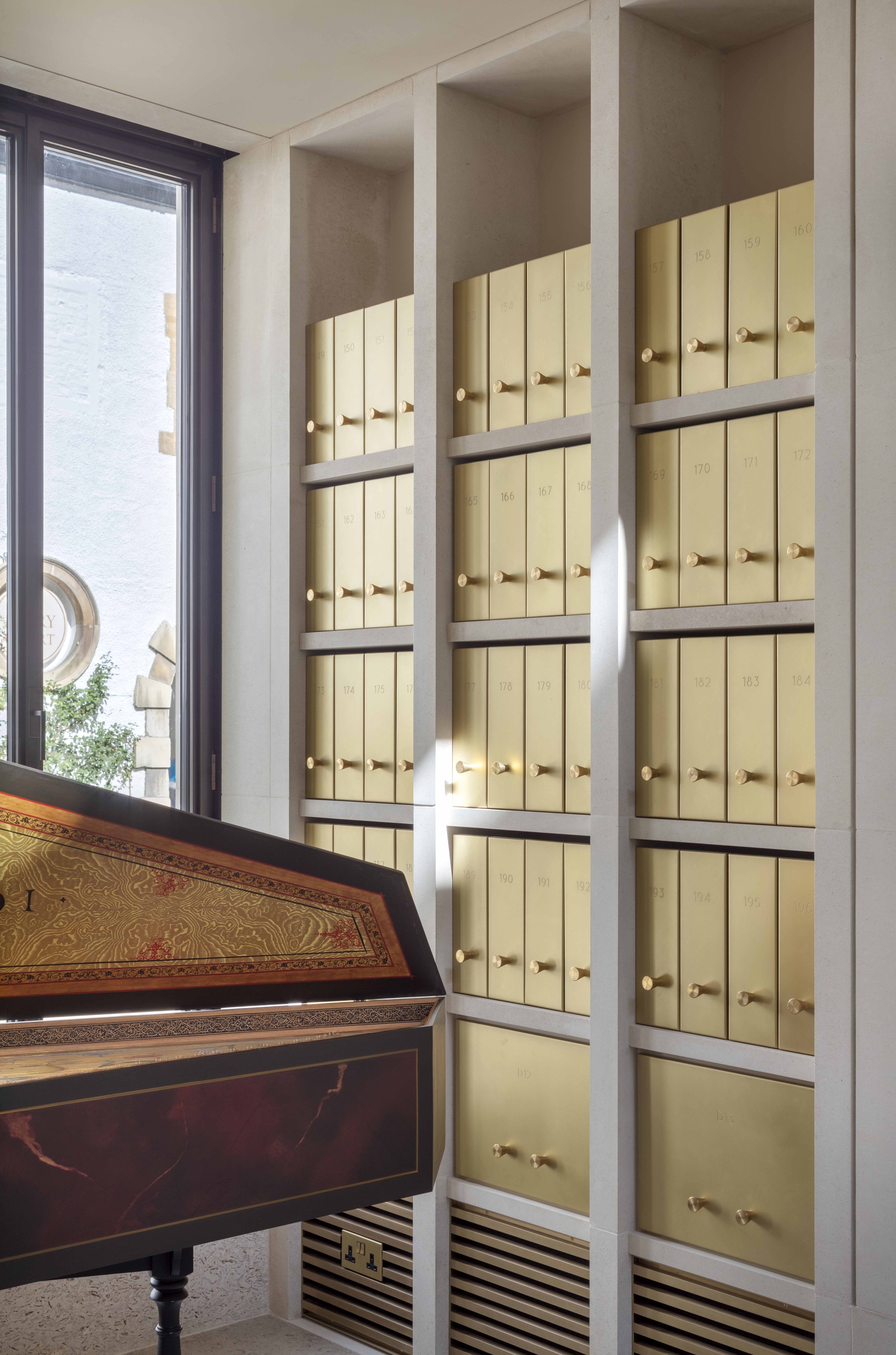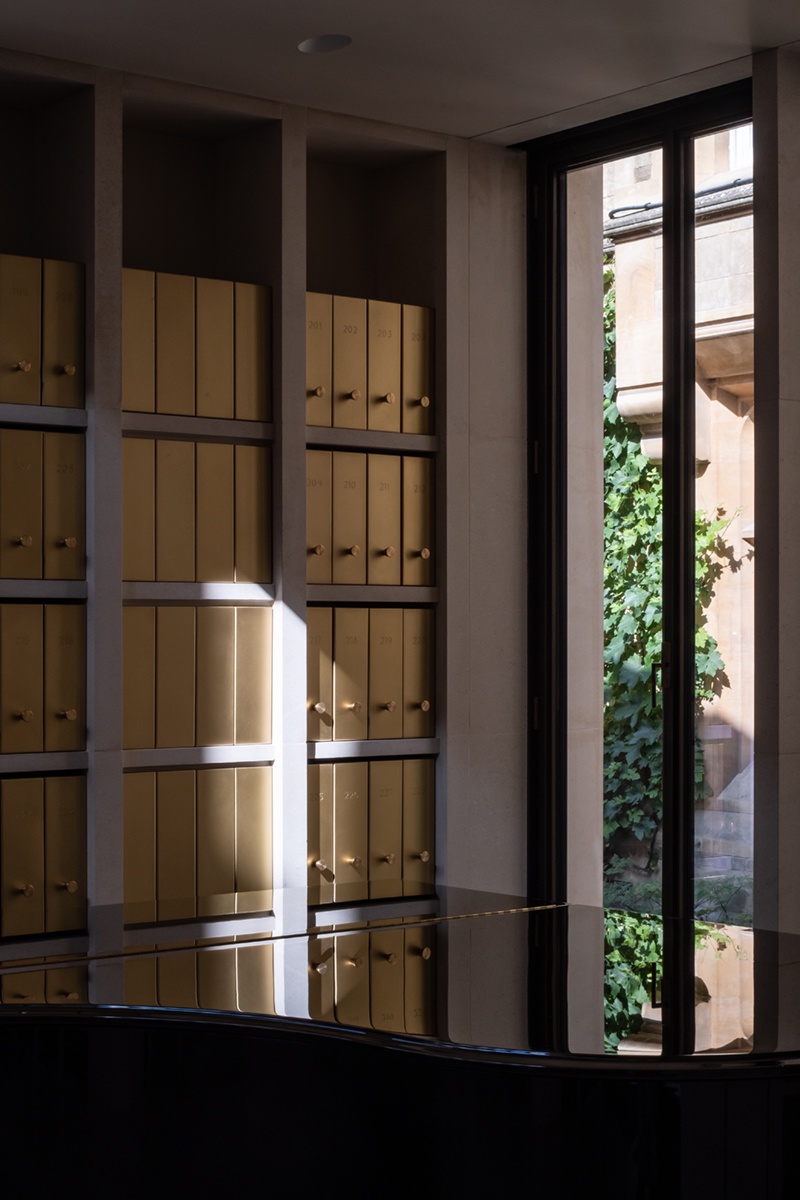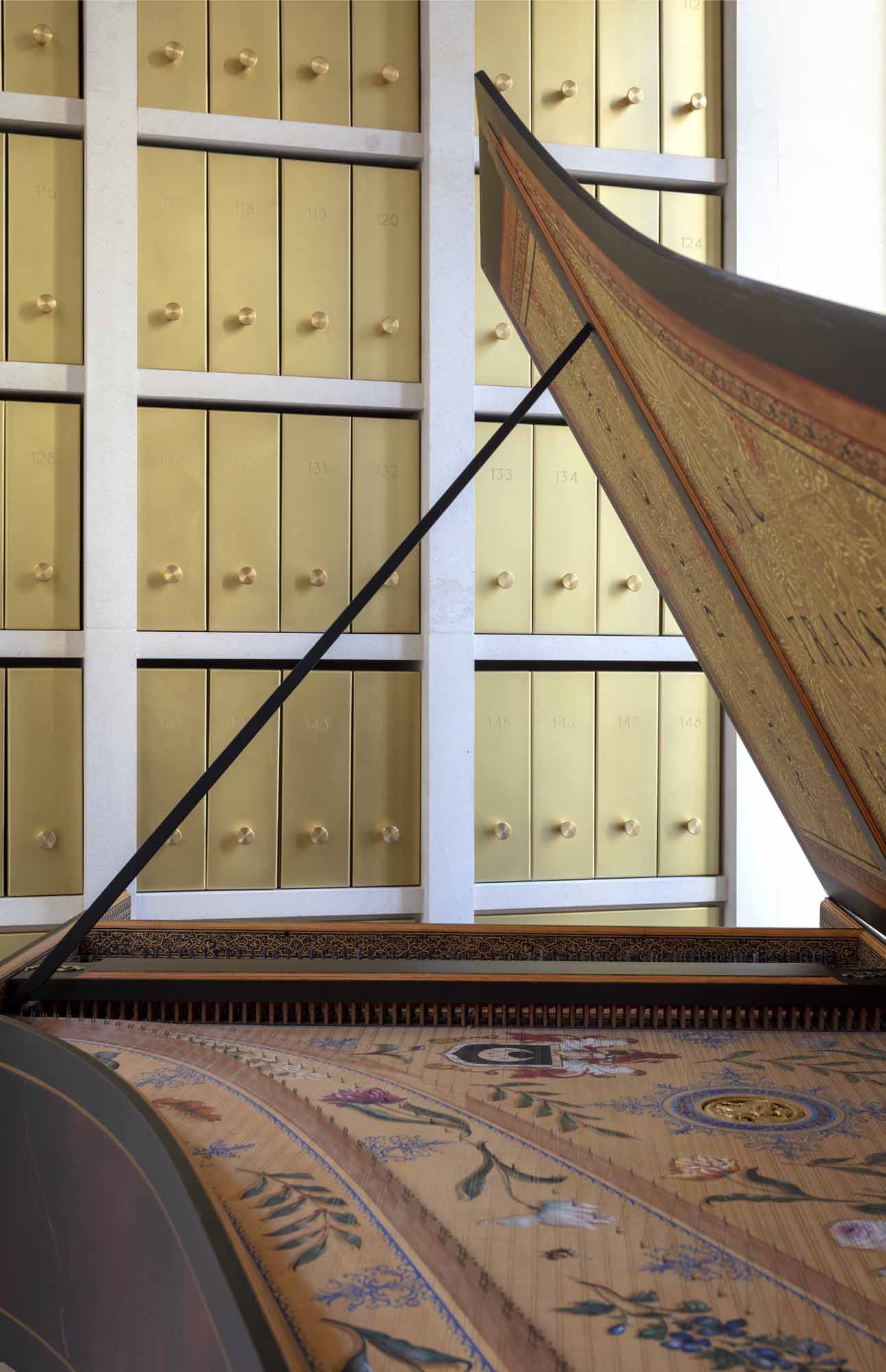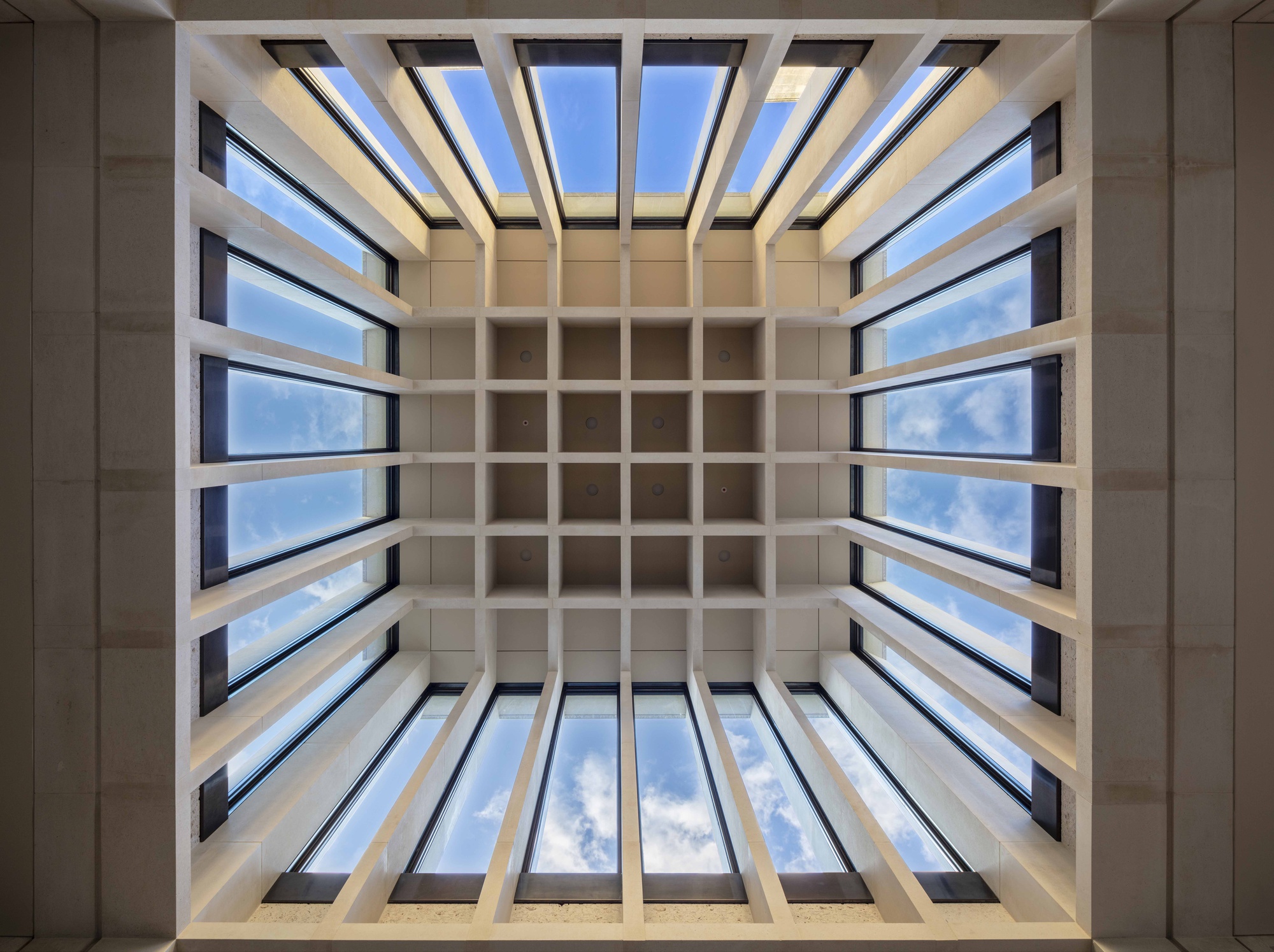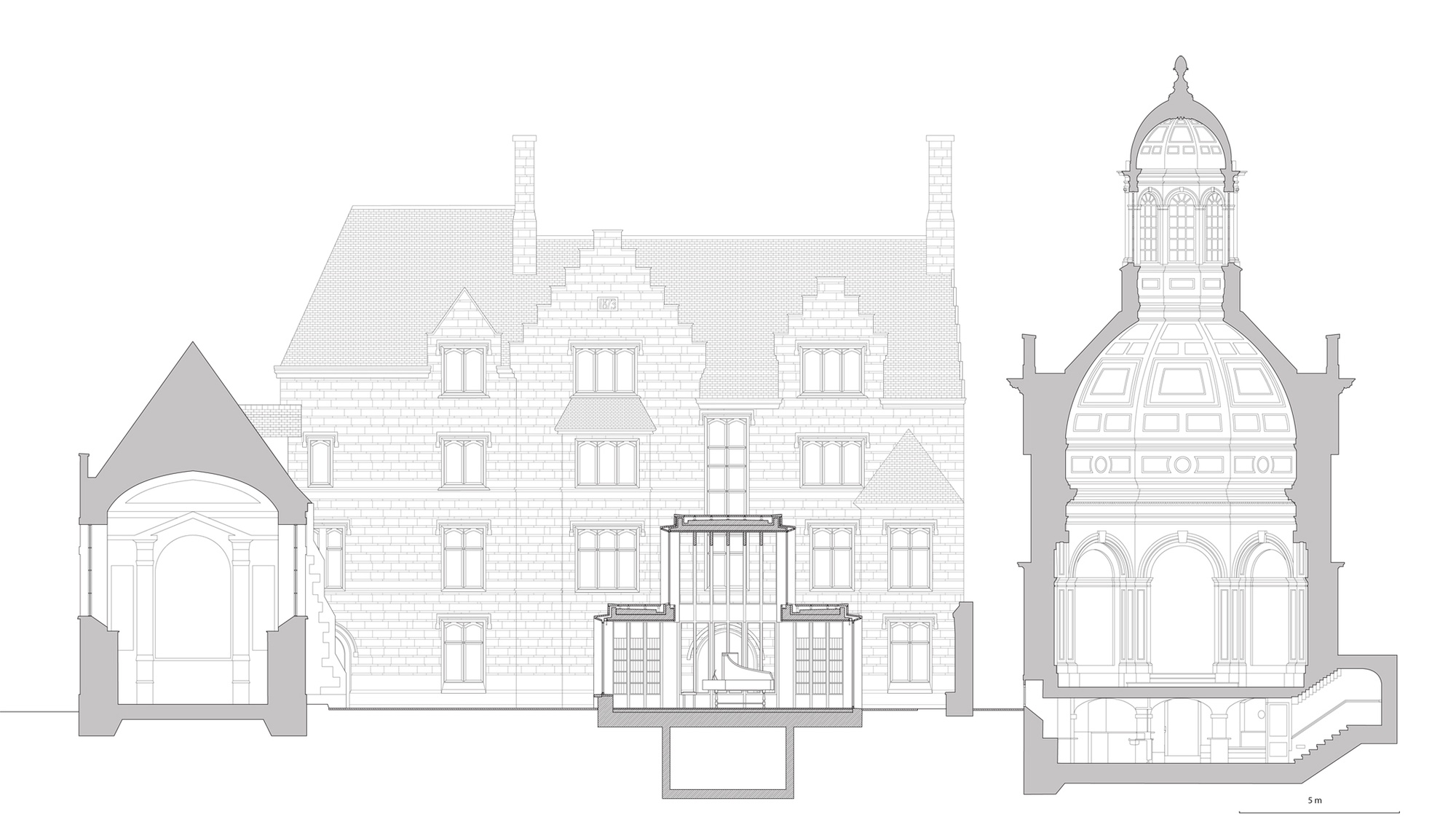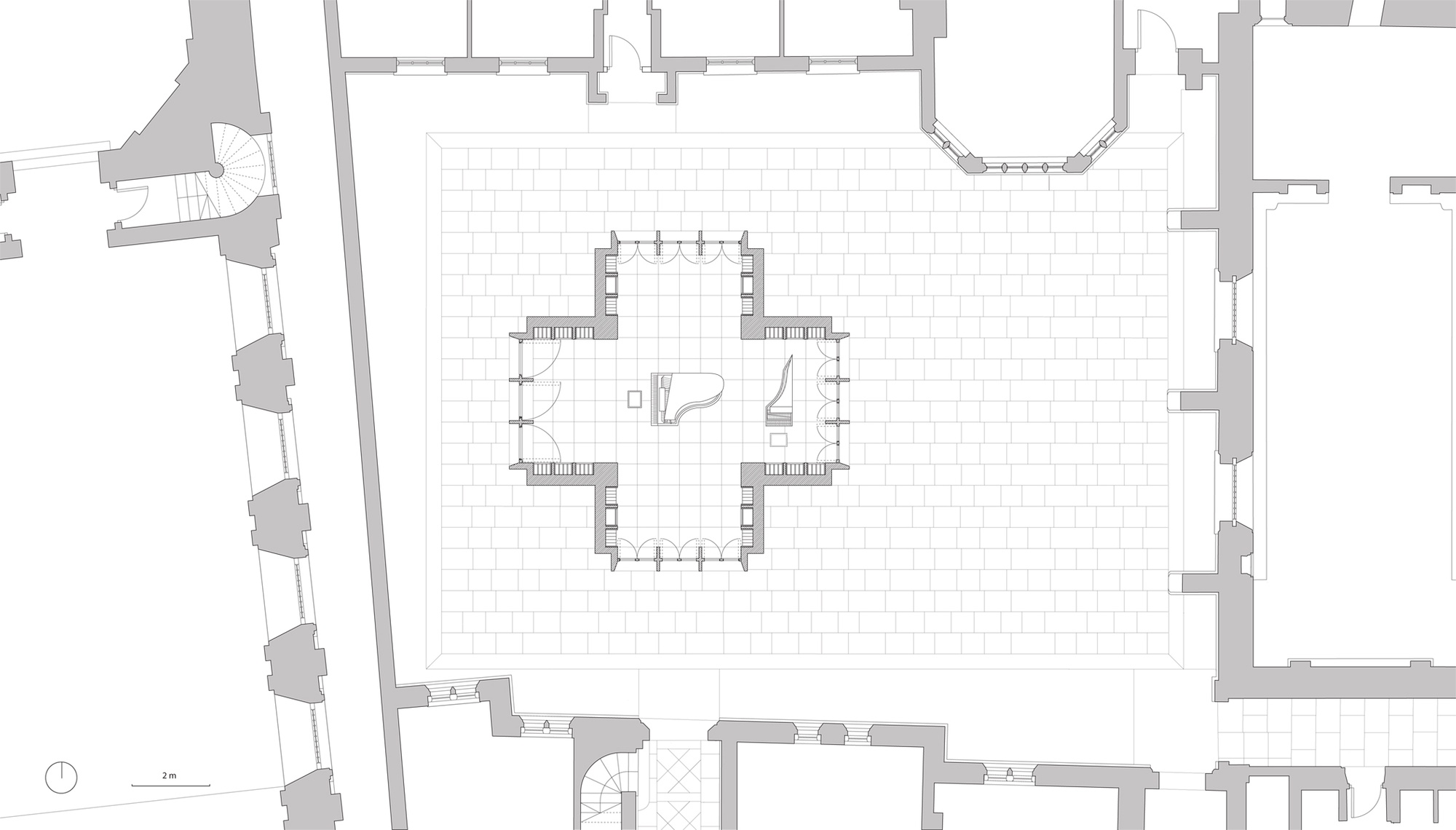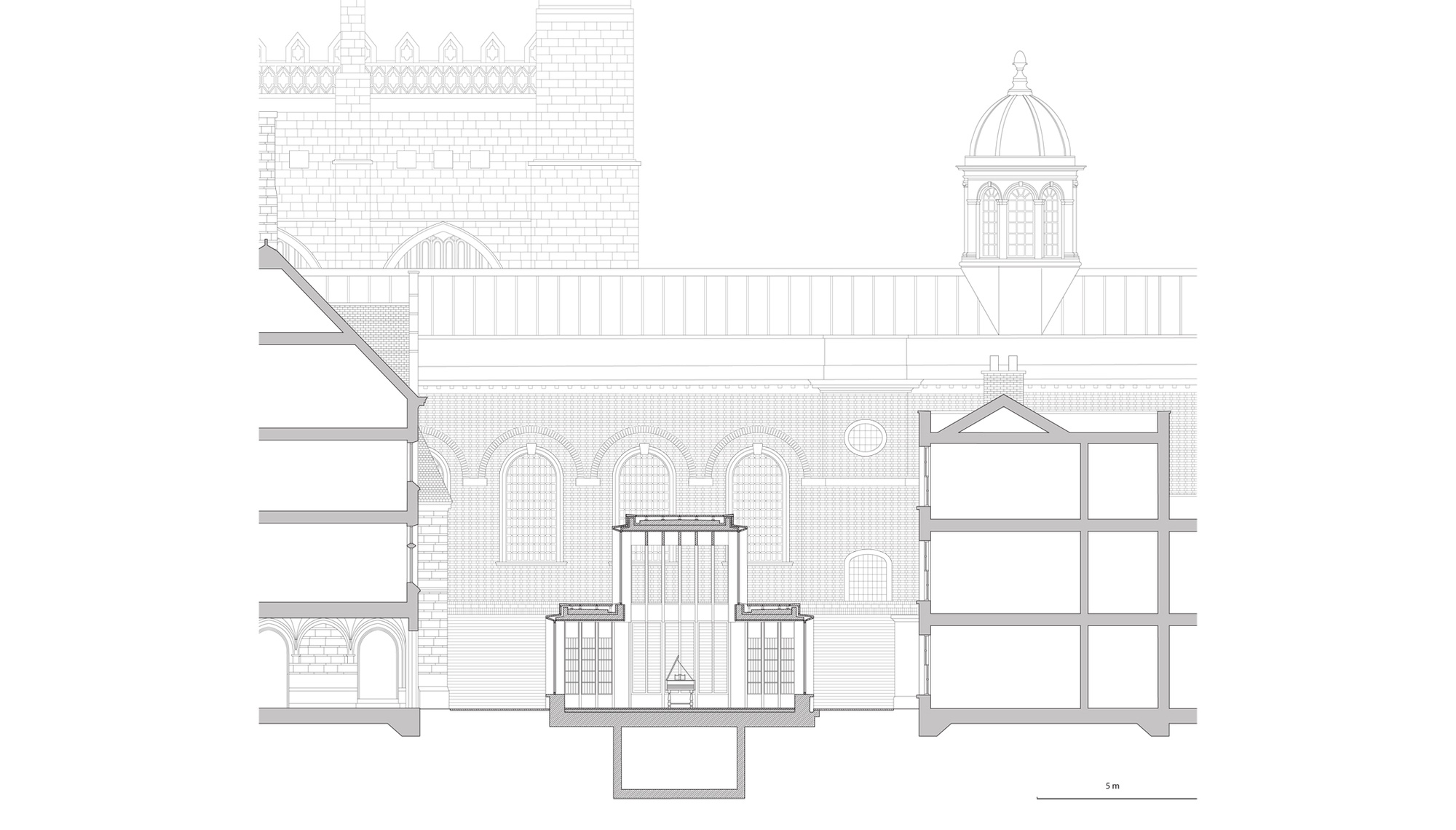Song School
2021
The WongAvery Gallery is a new stone-built music practice and performance space for Trinity Hall, Cambridge. The new building sits in the centre of Avery Court, on the College’s central Cambridge site. It is named the Wong Avery Gallery in recognition of its primary funders, the family of the late Dennis Avery, the College Fellow after whom the Court is also named.
Avery Court was originally the entrance court to the College, but lost this function following the creation of the adjacent Front Court. The aim of this project was not only to provide a much-needed dedicated space for music practice and performance, but also to rejuvenate Avery Court by re-landscaping the court around the new building.
Avery Court was chosen as the site for the new facility due to its proximity to the College chapel, however the site presented a number of challenges. The court is surrounded by Grade I and II Listed Buildings, including the chapels of both Trinity Hall and Clare College, and is therefore a highly sensitive historic setting. Surrounding rooms are illuminated by window openings into the court, giving limited options for locating a suitably sized new structure. In addition, the residential accommodation surrounding the court had to be protected from noise from the new facility. Finally, the construction site was accessible only via a narrow pedestrian passageway from Trinity Lane, severely limiting access for materials and plant during construction.
The architectural solution was to build a free-standing pavilion which would form the centrepiece for the re-landscaped court. It is a tiny monumental object, the singularity of which plays against the accretive complexity of the surroundings. While this strategy avoided obscuring existing window openings, building within college courts is without precedent in Cambridge and in light of the highly sensitive historic setting the planning application was reviewed by Historic England at a national level.
The Gallery is a simple load bearing construction made of Portland stone and precast concrete. It is a composition of cubic forms, based on a Greek cross plan. Performances will take place in the centre, with audience seating in the bay-windowed arms of the cross, the flanking walls of which are lined with shelves to store sheet music. Over the crossing a glazed lantern brings light into the centre of the plan and provides additional volume and internal surface area, thus improving the acoustic characteristics of the space. The bay windows can be fully opened, enabling the Gallery to be used as a bandstand for open-air performances.
The Gallery was also built to house the College’s harpsichord. This highly sensitive instrument required very stable temperature and humidity to keep its tuning and together with stringent acoustic performance requirements required close environmental control. The four corners of the Greek cross contain vertical ducts leading from a plant room concealed beneath the Gallery that distribute air at the correct temperature and humidity.
The landscape design by Kim Wilkie sets the building on a simple paved rectangle, surrounded by planted borders filled with predominantly green shrubs and climbing plants. The lighter coloured Portland stone of the Gallery stands out against the greenery and the darker, honey-coloured stone and brick of the existing buildings.
The addition of the new building greatly improves the College’s offer for students and staff participating in or studying music. By making visible the previously hidden activities of the College’s musicians it also helps raise awareness of music-making in the College and enriches the cultural life of the College as a whole.
